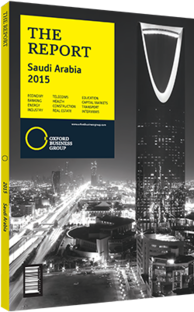Ali Al Ayed, General Director, Insurance Control Department, Saudi Arabian Monetary Agency (SAMA): Interview

Interview: Ali Al Ayed
Given the extensive losses many insurance companies have suffered over the last few years, what changes to the regulatory framework are needed?
ALI AL AYED: Establishing and preserving a solid and mature sector has been a top priority for SAMA since the General Department of Insurance Control’s inception, where several initiatives have been developed and undertaken. One of these is the enhancement of underwriting practices, whereby SAMA introduced guidelines that include actuarial pricing requirements for insurers to be obtained, submitted and implemented. These requirements have helped the sector recover from a severe price war. The sector has also benefitted from better assessment of client risk profiles, with insurers obtaining detailed claims histories of prospective clients. This has helped insurers better understand and estimate potential risks, which has, in turn, led to better and more realistic quotations. As a consequence, market profitability improved tremendously in 2014, with further improvement anticipated.
Will the entrance of foreign institutional investors into the Kingdom’s capital markets provide opportunities for mergers and acquisitions?
AL AYED: It is too early to assess whether the entrance of foreign institutional investors into the capital markets will provide opportunities for future mergers and acquisitions. This is due to the current limitation placed on foreign investors owning shares; 5% is the maximum holding share for each foreign investor.
Furthermore, the highly liquid stock market has led to inflated prices for insurers’ shares. This is a major discouraging factor as it represents an obstacle to potential mergers and acquisitions taking place in the insurance sector over the next few years.
What role is SAMA playing in improving the low market penetration of non-compulsory products?
AL AYED: SAMA is encouraging the market to be creative in developing new products that can contribute to higher penetration, especially non-compulsory medical insurance for Saudis, property insurance coverage for small and medium-sized enterprises, and savings and protection products as a whole. Moreover, the industry, in coordination with SAMA, is working on launching a public campaign to help increase awareness about the benefits of insurance.
What can be done to create a more equitable relationship between health care providers and insurance companies to control rising health care costs?
AL AYED: Health care costs can be controlled primarily by closing the gap between demand and supply. That can be achieved by easing the licensing process for opening hospitals, allowing insurance companies to own and operate health care providers (provided that the right setup exists), enforcing the primary care model and family medicine, and enhancing government sector providers’ billing and management systems to better manage insurance schemes. Rising health care costs are an issue in every growing economy, as people become wealthier and demand the latest medicine and treatment. Increased competition amongst health care providers and improved systems may help to reduce rising costs. Saudi Arabia is, however, subject to the same global trends as other countries, and as a result overall health care costs may continue to increase.
To what extent will the implementation of the Real Estate Finance Law and Implementation Regulation affect demand for non-compulsory products?
AL AYED: The Real Estate Finance Law and its Implementation Regulations are a key part of SAMA’s efforts to develop and modernise the financial framework in Saudi Arabia. It is expected that banks and finance companies will seek to protect their loans by requiring that appropriate property and life insurance coverage is in place. At this stage, it is still too early to assess the impact of the law on these insurance classes; however, SAMA is optimistic that it will help the sector grow.
You have reached the limit of premium articles you can view for free.
Choose from the options below to purchase print or digital editions of our Reports. You can also purchase a website subscription giving you unlimited access to all of our Reports online for 12 months.
If you have already purchased this Report or have a website subscription, please login to continue.

